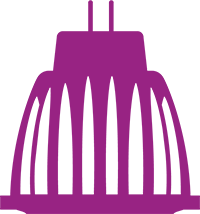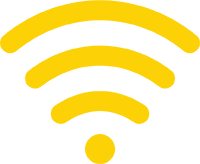Frequently Asked Questions
What is solid state lighting (SSL)?
Solid-state lighting (SSL) refers to lighting that uses semiconductor light-emitting diodes (LEDs), organic light-emitting diodes (OLED), or polymer light-emitting diodes (PLED) as sources of illumination rather than electrical filaments, plasma (used in arc lamps such as fluorescent lamps), or gas. “Solid state” refers commonly to light emitted by solid-state electroluminescence, as opposed to incandescent bulbs (which use thermal radiation) or fluorescent tubes. Compared to incandescent lighting, SSL creates visible light with reduced heat generation or parasitic energy dissipation. Most common “white” LEDs convert blue light from a solid-state device to an (approximate) white light spectrum using photoluminescence, the same principle used in conventional fluorescent tubes.
What are the benefits of SSL?
Solid State Lighting (SSL) has the potential to provide artificial lighting more efficiently than traditional lighting technologies at a low lifetime cost. Relative to traditional light sources such as incandescent and fluorescent, potential benefits of SSL include lower power consumption, longer product life, lower maintenance costs, digital controllability, no mercury content, and improved durability (more resistent to vibrations). However, there is wide variation in the performance and quality of SSL sources. There is also insufficient testing and standards in some cases to account for how well SSL products perform compared with traditional sources (e.g., lifetime, flicker).
Why is the IEA SSLC Platform focused on SSL?
Solid State Lighting (SSL) has the potential to provide artificial lighting more efficiently and save consumers energy and money. However, wide variation in the performance and quality of SSL sources can damage consumer confidence and delay acceptance. With a focus on product performance, harmonized testing, and health and environment factors, the goal of the SSLC Platform is to assist governments in their support of quality SSL products that will save consumers money and reduce carbon emissions.
Are there health risks associated with SSL?
In 2014 the SSL published a comprehensive review of the current literature relating to human health impacts of solid-state lighting (SSL). This review evaluates whether energy-efficient LED systems are a safe light source to illuminate our homes, buildings and outdoor areas. The review concluded that SSL technology is not expected to have more direct negative impacts on human health with respect to non-visual effects than other lighting technologies. For electromagnetic fields, human exposure emitted by SSL products does not appear to be a critical issue as their magnitude is generally much smaller than those corresponding to discharge lamps or certain household appliances. The report also provides advice on flicker and glare.
What are the SSLC Platform Performance Tiers? Are they standards?
The product performance tiers are a limited number of proposed performance levels, agreed upon by IEA SSLC Platform members, that could be utilised by government, non-profit and donor agencies when designing programmes and policies. The objective is to provide a limited number of levels that can be utilised by programme designers to reduce the costs of writing specifications and to facilitate economic advantages for industry/trade. Further, they help minimise compliance costs with SSL programmes and policies. Member countries are not obligated to use the tiers, and they are not international standards.




































